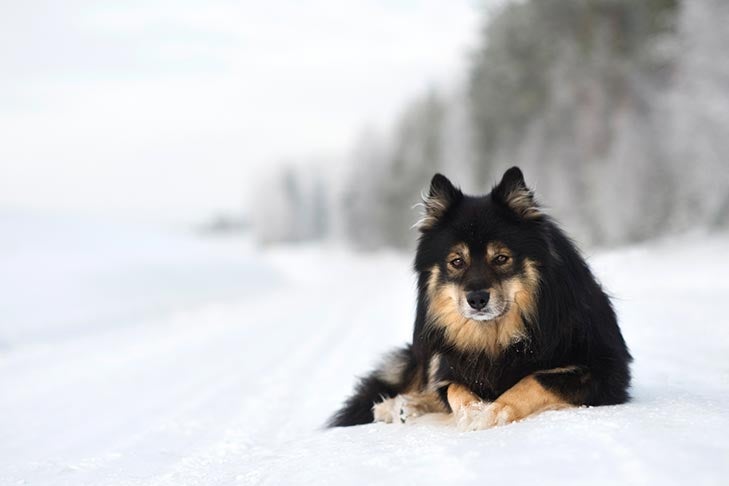
Left in the cold for too long, dogs can develop hypothermia, a dangerous condition that occurs when the core body temperature drops too low. For dogs, mild hypothermia begins to set in when their body temperature drops below 99° Fahrenheit.
Frostbite can also become an issue at extremely low temperatures. If left untreated, hypothermia can also result in cardiac and respiratory failure, brain damage, coma, and even death.
- Mild hypothermia: body temperature of 90 – 99°F
- Moderate hypothermia: body temperature of 82 – 90°F
- Severe hypothermia: any temperature less than 82°F
Signs of Hypothermia in Dogs
Shivering and curling up for warmth are some of the first signs of mild hypothermia in dogs. Other signs to watch out for include the following:
- Increased heart rate, followed by a slow heart rate.
- Rapid breathing, followed by progressively slower and shallower breath.
- Sluggishness and delayed reflexes.
- Depression.
- Paleness.
- Dilated pupils.
- Loss of consciousness.
What Dogs Are Susceptible to Hypothermia?
While most dogs will only experience hypothermia in cold temperatures, newborn puppies can suffer from hypothermia in normal temperatures. Small dogs, senior dogs, puppies, and short-coated dogs are at a higher risk of rapid loss of body heat.
Treating Hypothermia in Dogs
If you suspect your dog may be suffering from hypothermia, bring your dog somewhere warm if possible and contact your vet immediately.
A dog with hypothermia will be treated until they reach a normal body temperature. Minimize your dog’s movement while they are being warmed up.
- Mild hypothermia can typically be treated with insulation and blankets.
- Moderate hypothermia will require active external heat sources such as radiant heat (in addition to a protective layer such as a sweater).
- Severe hypothermia requires invasive core warming, such as warm IV fluids.
Preventing Hypothermia in Dogs
A warm dog jacket or sweater and dog booties will help minimize the risk of hypothermia in dogs. However, clothing for your dog should never be used on an unattended dog or as a substitute for proper care, but rather as an adjunct. In general, it is safer for pets to be in an area where temperatures can be controlled.
Make sure your dog is dry before taking them out for a walk. If a dog is wet or damp, these areas are more vulnerable to frostbite. Keep winter walks short when possible and limit time outdoors in extreme cold.
When in doubt, always consult your veterinarian.

